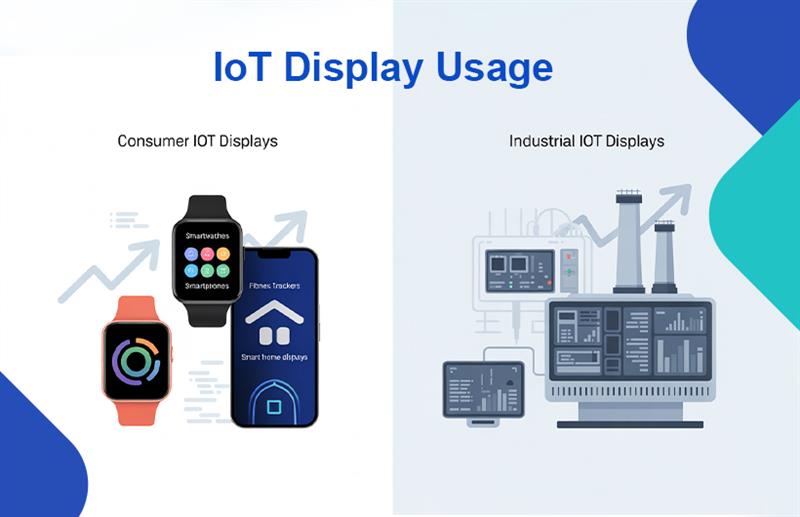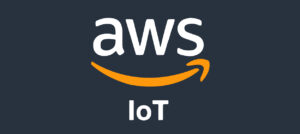IoT (Internet of Things) is revolutionizing how devices communicate and interact across both consumer and industrial settings, including through display interfaces like IoT displays that connect users with smart devices. At Monarch Innovation, we closely track how this ecosystem evolves across both consumer and industrial applications.
In this blog, we’ll look at some of the major IoT display trends in usage across both markets to provide you with insight into how the technology has adjusted to different requirements.
What Are IoT Displays?
An IoT display refers to any screen or interface built into IoT devices that allows users to interact with, monitor or control these devices. They vary widely in terms of use case, from small home displays up to rugged large displays used for industrial environments.
Consumer IoT Device Trends
Consumer IoT devices are intended for everyday users and emphasize ease of use, aesthetics, and connectivity. Here are a few key trends:
- Sleek Touch Interfaces: Consumer devices such as smart speakers, wearables, and home assistants often boast sleek touch interfaces with vibrant colours and seamless animations for optimal user experiences.
- Voice and Gesture Integration: Additionally to displays, voice control and gesture recognition have become popular ways of engaging users without physically having to touch an interface. This provides convenient hands-free interaction.
- Energy Efficient Devices: Battery-operated consumer devices need power-sipping displays that ensure longevity without diminishing quality or impacting device longevity.
- Customization & Personalization: Consumers expect customizable interfaces on smartwatches or themes on smart home hubs to meet their expectations of personalisation.
- Affordable & Compact: Consumer IoT displays emphasise cost effectiveness and small form factors to promote mass adoption.
Industrial IoT Display Trends
Industrial IoT (IIoT) displays serve a very different purpose. They’re designed for reliability, durability, and functionality in demanding environments:
- Rugged & Durable Screens: Industrial displays must withstand harsh environmental elements like extreme temperatures, dust, moisture and mechanical shocks – often featuring reinforced glass panels and sealed enclosures to withstand these threats.
- High Visibility: Large screens equipped with high brightness levels ensure clear visibility even in bright outdoor or factory settings.
- Specialised Interfaces: Industrial devices often utilize displays with multi-touch capabilities and data-rich dashboards for real-time monitoring of complex control panels and real-time dashboards.
- Long Lifespan & Stability: Industrial deployments necessitate displays with long operational lifetimes and consistent performance under constant use, for maximum ROI.
- Connectivity & Integration: These displays connect seamlessly with other machines and control systems used in manufacturing or automation, supporting specific protocols unique to manufacturing or automation processes.
Emerging Trends: Augmented Reality and Standardised Interfaces
One of the most innovative and latest trends in IoT display technology, particularly in industrial use, is the incorporation of augmented reality (AR). Instead of placing a display on every machine, AR headsets or tablets allow workers to point their device at equipment and view overlaid IoT data in real time. This enhances mobility and reduces hardware costs while offering context-aware visualisations.
Another important development is the standardisation of user interfaces across different equipment. Whether based on Android or Windows, companies are aiming for a consistent Human-Machine Interface (HMI) experience across machines to streamline training and reduce user errors.
Consumer vs. Industrial IoT Display Usage: Key Differences
Here’s a closer look at the key differences between display usage in consumer and industrial IoT applications:
| Feature | Consumer IoT | Industrial IoT |
| Display Type | OLED, IPS LCD, curved displays | Resistive touchscreens, rugged LCDs |
| Design Focus | Aesthetics, interactivity, personalisation | Durability, clarity, function |
| Interaction | High responsiveness, gestures, animations | Glove-compatible, simple UIs, fewer animations |
| Power Efficiency | Always-on features, low-power modes | Optimised for 24/7 operations |
| Contextual Use | Home, wearable, lifestyle environments | Factories, vehicles, outdoors, hazardous zones |
| Innovation Edge | Custom themes, app integrations | AR-based interfaces, centralised HMIs |
In essence, consumer IoT devices with displays are becoming increasingly like mini-smartphones sleek, intuitive, and feature-rich. Meanwhile, industrial IoT displays prioritise robustness, user safety, and mission-critical performance.
How Monarch Innovation Supports IoT Display Needs
At Monarch Innovation, we develop tailored IoT solutions that fit both consumer and industrial needs. Our expertise includes:
- Designing energy-efficient, user-friendly displays for consumer IoT products
- Engineering rugged, reliable interfaces for industrial automation and smart manufacturing
- Integrating advanced connectivity options to ensure seamless communication between devices
Conclusion
IoT displays are not just visual add-ons; they are becoming central to how users interact with connected systems. From stylish smartwatch interfaces to rugged factory HMIs, display technology is adapting to meet the distinct demands of consumer and industrial users.
As IoT adoption continues to surge, expect even more innovation at the display interface level, with flexible screens, holographic projections, or voice-augmented displays. Whether it’s a health tracker on your wrist or a diagnostics panel on a shipping crane, the display will remain a crucial bridge between humans and smart devices.
At Monarch Innovation, we continuously monitor and adapt to these display trends to develop smart, scalable, and user-centric IoT solutions that cater to a diverse range of industries and consumers alike.
























